Windows may not be perfect, but Microsoft gives you the tools to make the experience better with PowerToys. Here's everything you need to know.
It's all too common for beloved pieces of software to vanish into obscurity never to be seen again, and that holds up when we talk about Microsoft. So it's all the more exciting when something we used to love makes a return in better shape than ever. That is the case of PowerToys, a set of tools aimed at Windows power users that initially existed in the mid-90s through the late aughts. After vanishing for a few generations Microsoft revived PowerToys in 2019, and it's been going strong ever since.
What is PowerToys?
A huge set of tools and utilities
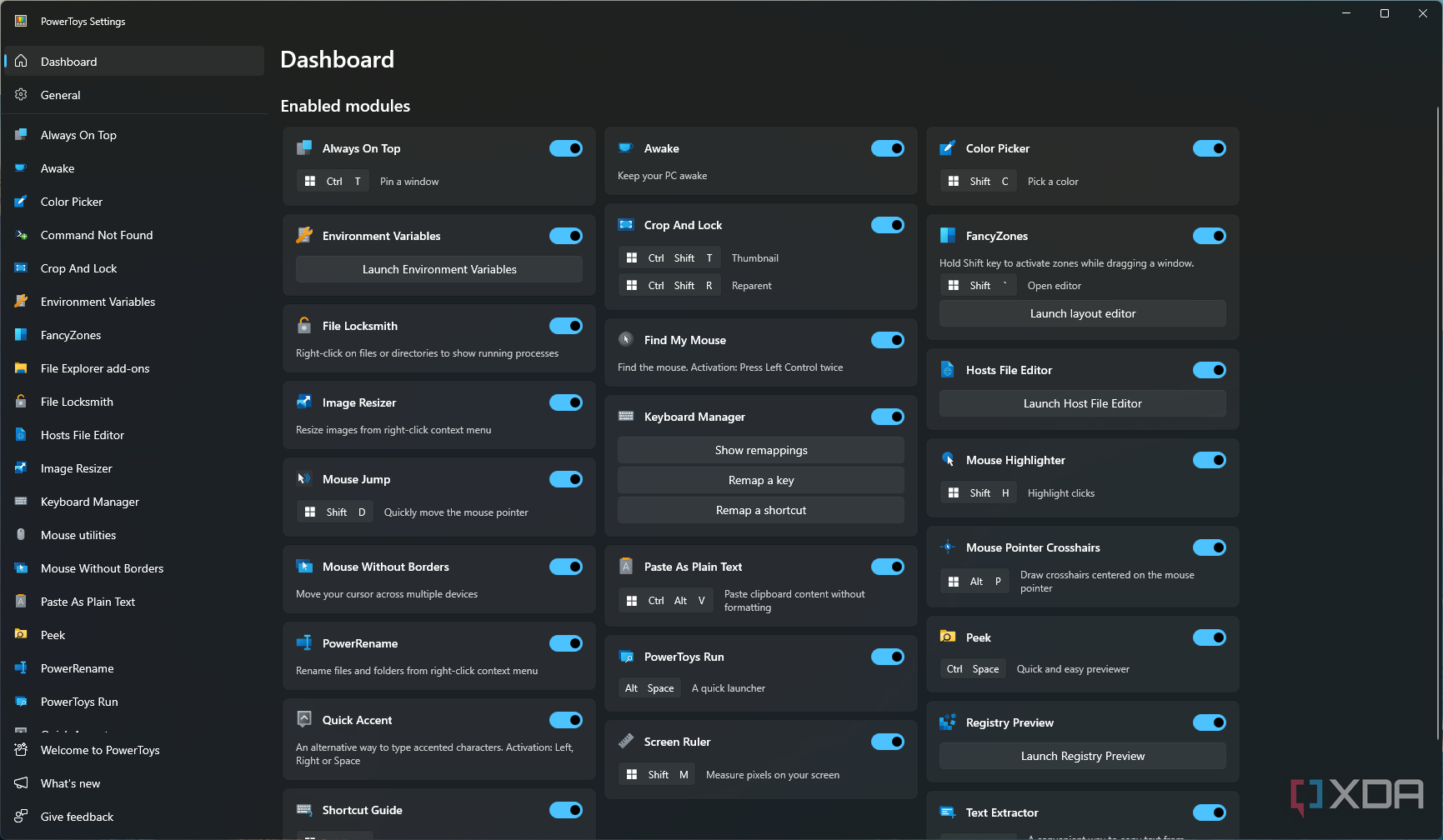
The current iteration of PowerToys offers a ton of features to help you make the most of your Windows 10 or Windows 11 PC. From advanced window management to a faster search and run tool, plus things like a screen ruler, there's a lot to love here for any user wanting to get things done faster on their PC.
At writing time, there are 24 utilities included in PowerToys, but more will likely be added in the future. Highlights include FancyZones, Mouse utilities, and PowerToys Run, but there's quite a bit more to dive into.
How to download PowerToys
What you need to get started
While it's developed by Microsoft, PowerToys is not included with any version of Windows out of the box, at least not for now. However, you can download it easily using one of the following options:
- Download the latest release from the GitHub page
- Download it from the Microsoft Store (though it's still hosted on separate servers)
-
Type the following command in Windows Terminal:
winget install Microsoft.PowerToys
The basics of using PowerToys
Once you've installed PowerToys, you can launch it from the Start menu, and the main window gives you access to settings for the entire suite of tools included. The main page is the Dashboard, which lets you enable or disable any of the built-in tools depending on your needs. Not everyone will need all of these tools, so you can reduce complexity by disabling things you don't plan on using.
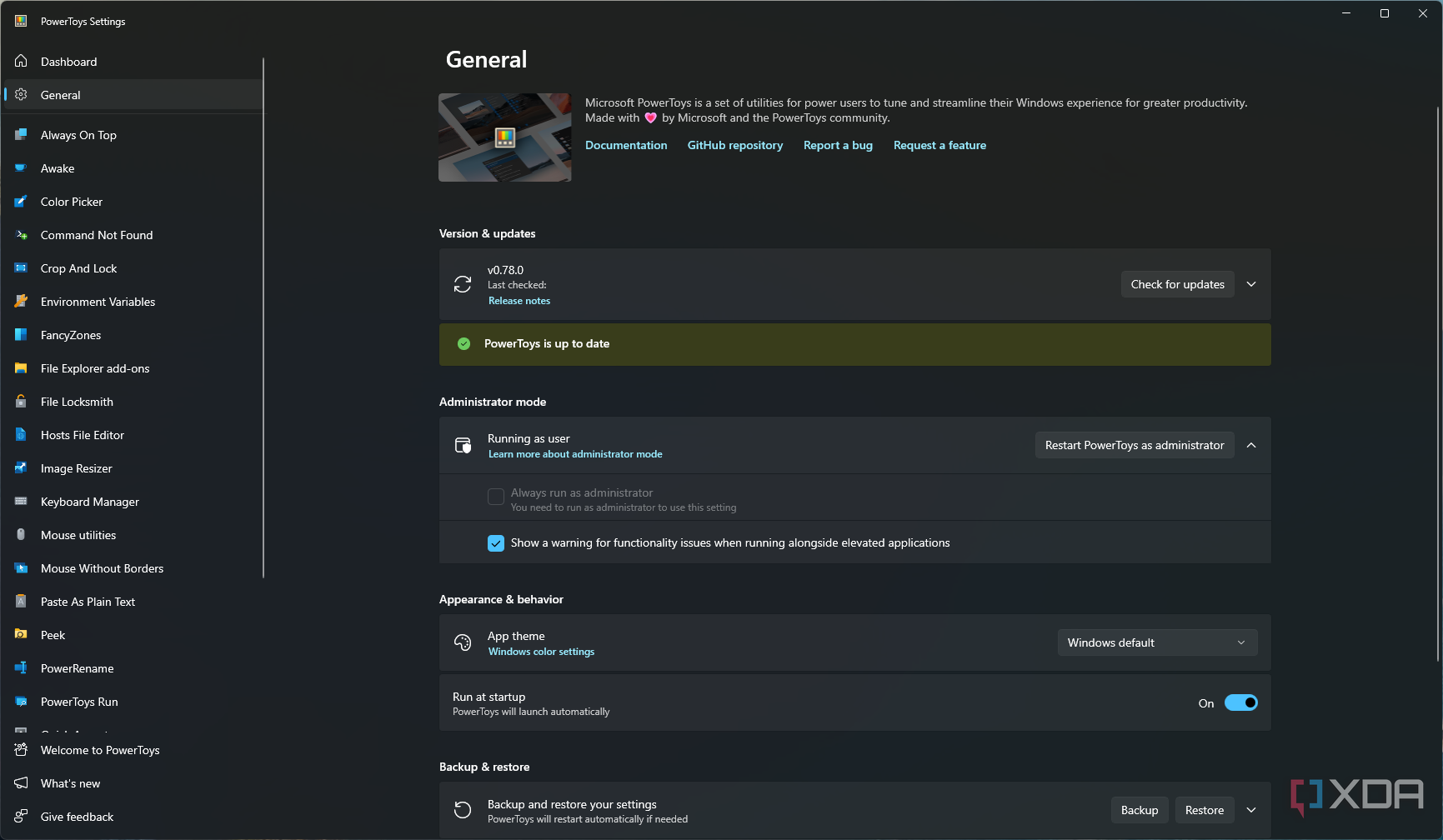
Over on the General section, you can do things like check for updates and manage other basic settings.
Below these two pages, you have all the tools included in PowerToys with their respective settings, which we'll dive into further below.
The shortcut panel
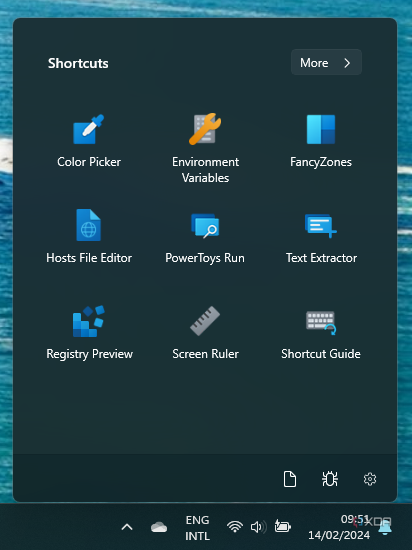
Before we get into the individual tools, however, it's worth mentioning the Shortcuts panel, too. PowerToys launches with Windows by default, and you'll see it in the system tray area. If you click the PowerToys icon here, you can quickly launch the most relevant PowerToys modules, such as FancyZones and PowerToys Run. This is a convenient way to run these modules if you don't want to memorize the keyboard shortcuts for each module.
PowerToys modules
As we've mentioned, PowerToys currently includes 24 modules to help boost your productivity and make it easier to use your PC. Here's a rundown of everything you can use to improve your Windows experience.
Always on Top
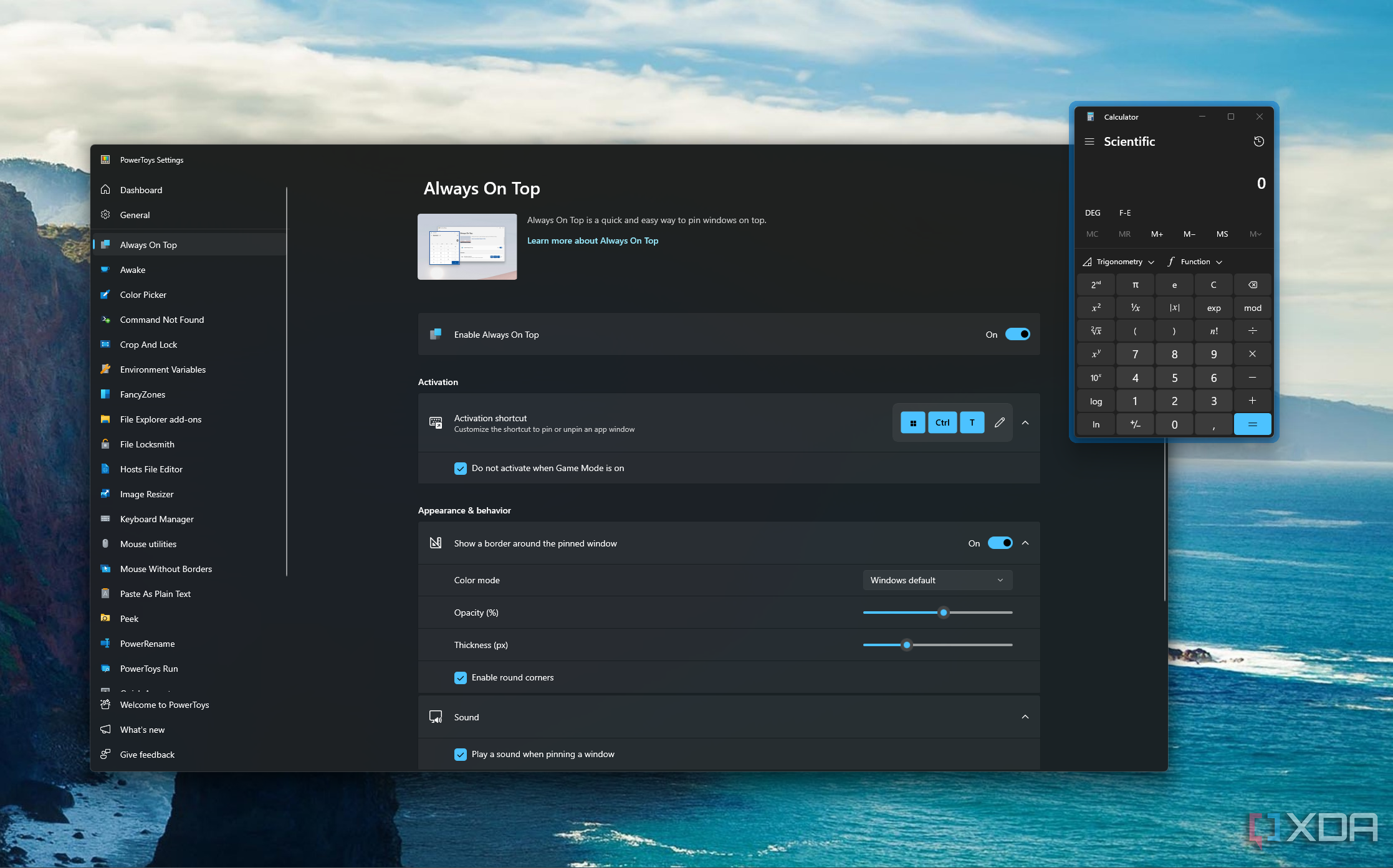
This PowerToys module has a fairly easy to understand name. Always on Top allows you to force a specific window to always be pinned on top of all other windows on your PC. This can be very useful for certain apps that you may need to use frequently but that don't offer an "always on top" option by default.
A good example is the Calculator app, which does have an always on top mode built-in, but it only works for the standard calculator. If you want to use the scientific calculator or currency converter in always on top mode, this PowerToys module lets you do just that. Once the module is enabled, all you need to do is press Windows + Ctrl + T (though you can customize the shortcut) when your desired app is open, and it will be pinned on top of all other apps.
Always on Top also offers options to add a border around pinned windows, which is fully customizable.
Awake
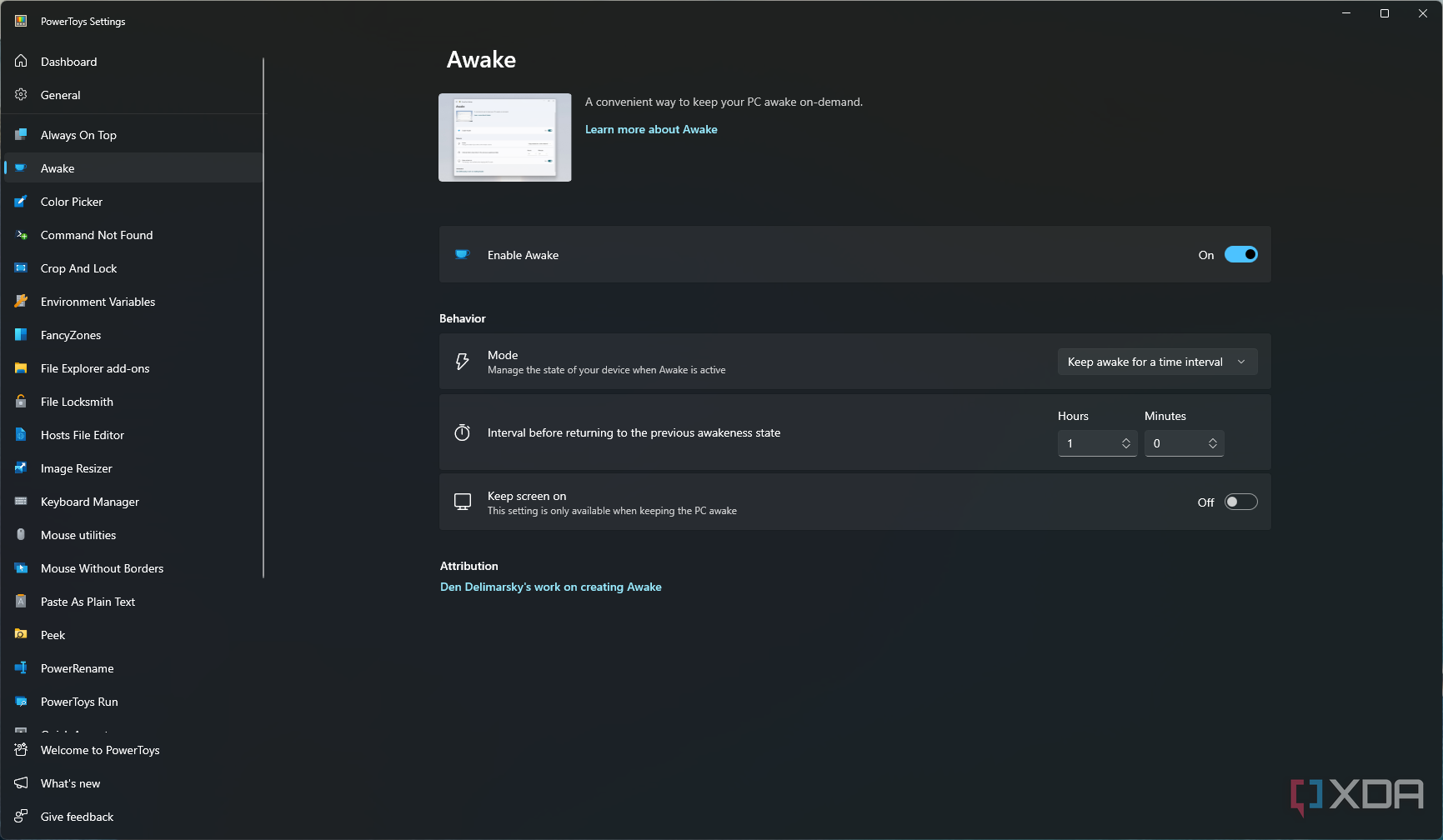
Awake is a fairly simple module that allows you to keep your PC awake for as long as you want to. Of course, you can do this by managing the power settings on your PC, but Awake is a good one-time solution. You can set a specific length for your PC to stay awake or choose to keep it awake indefinitely.
This can come in handy when certain active tasks may fail to keep your device awake, potentially resulting in errors when the computer goes to sleep. It also offers more detailed timer settings compared to the built-in Windows settings, which is always a plus.
Color picker
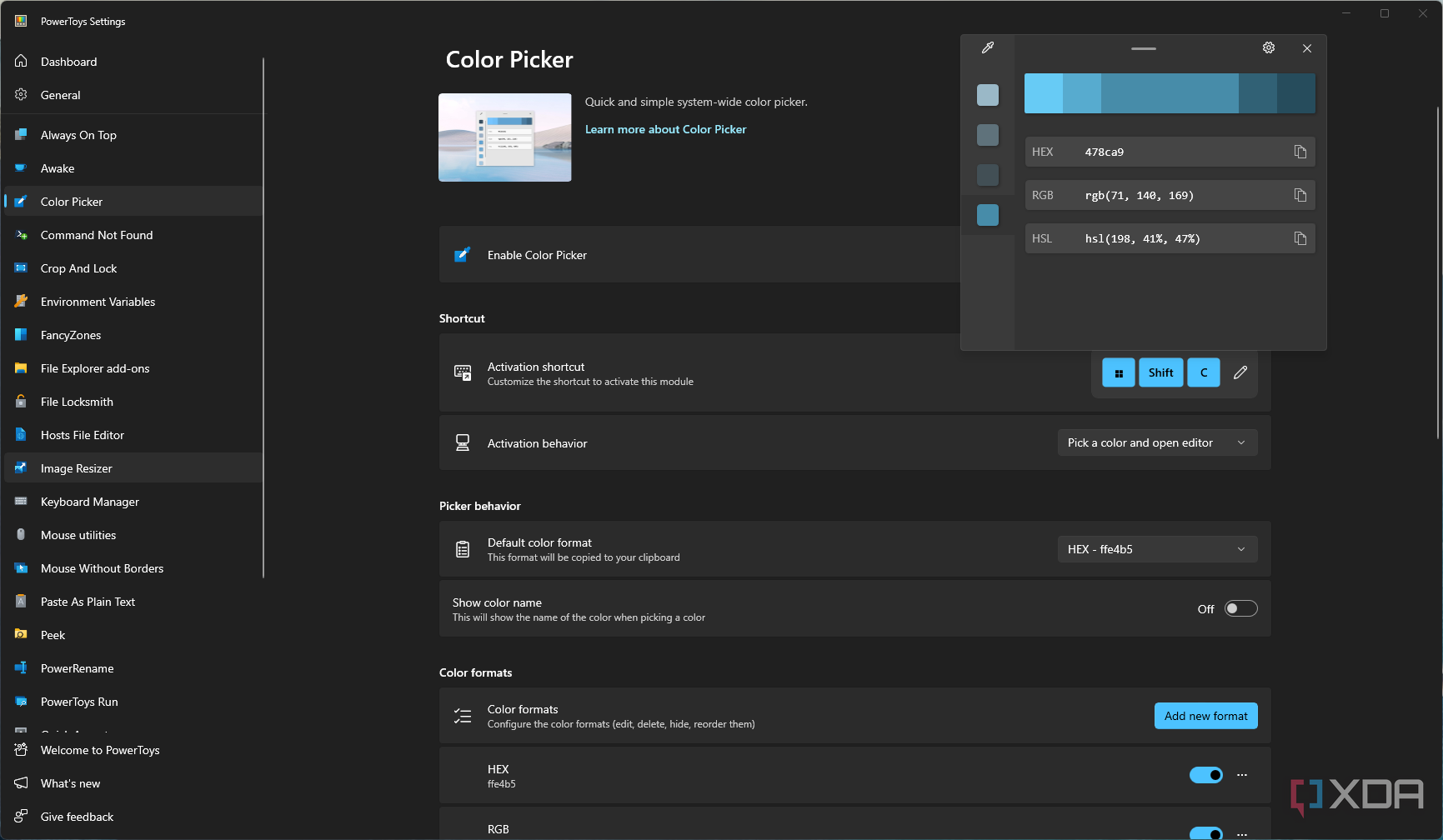
Have you ever wanted to select a specific color from your screen to share with someone, or used a program that doesn't have a color picker? That's what Color Picker is for, and it's very useful in these specific situations. When enabled, you can press Windows + Shift + C to launch the color picker and choose any color from your screen.
Once you select a color, an editor will open showing that color's identifiers as an Hex code, RGB, or HSL values. You can also see related shades of the same color if you want to work with something similar, and you can select them right there to use in another app.
Command not found
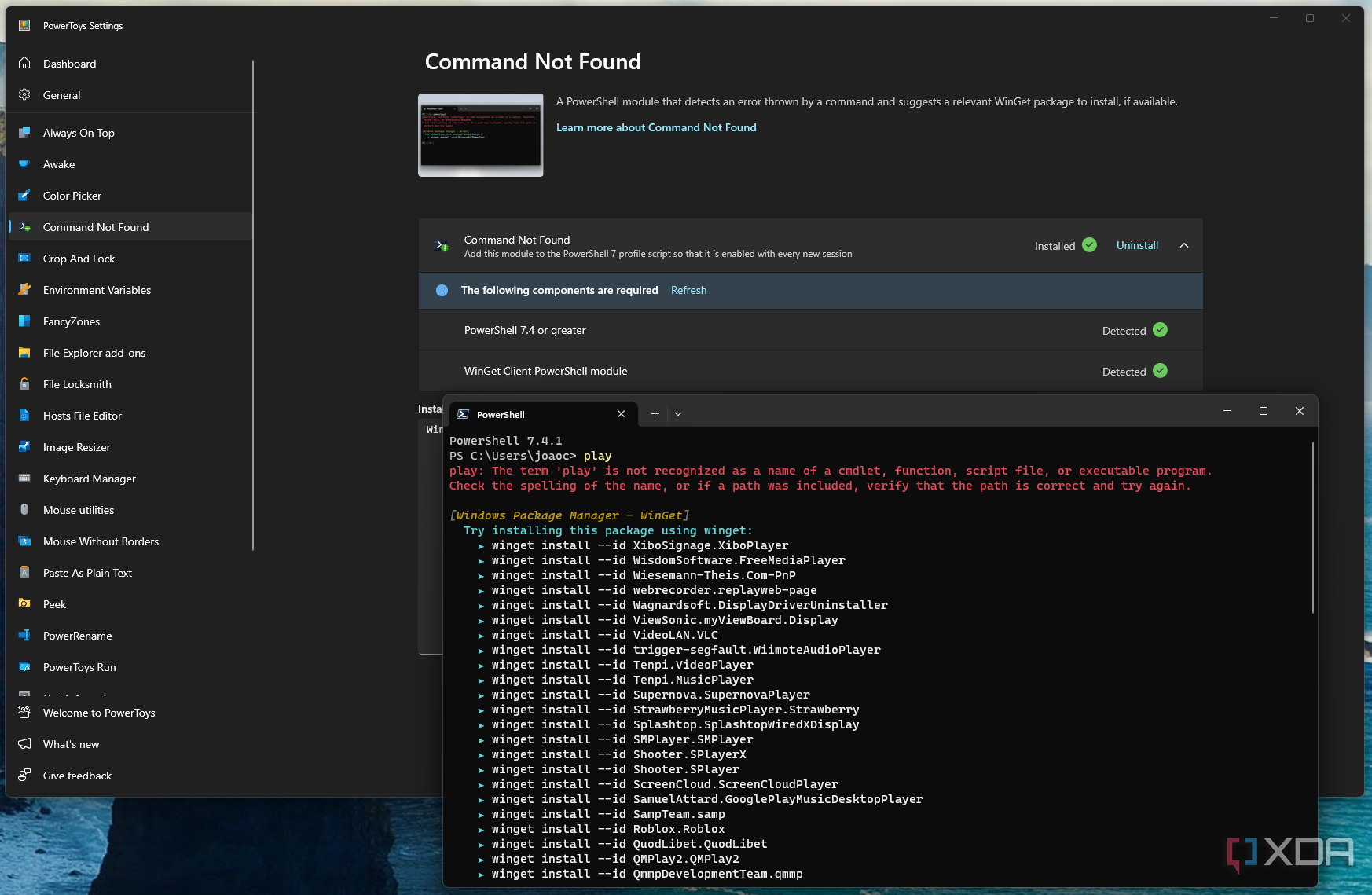
Command not found is a relatively simple module, but one that can be pretty handy if you use PowerShell a lot. It's a script for PowerShell 7 (not Windows PowerShell) that kicks in when you try to use an unrecognized command, and it suggests apps you may want to install from winget (or Windows Package Manager) that may be able to run that command. If you've recently switched computers and you're missing an app you're used to, this can remind you to install it. It requires a bit more setup than usual, though, since you need to install the module separately, plus one or two dependencies.
Crop and lock
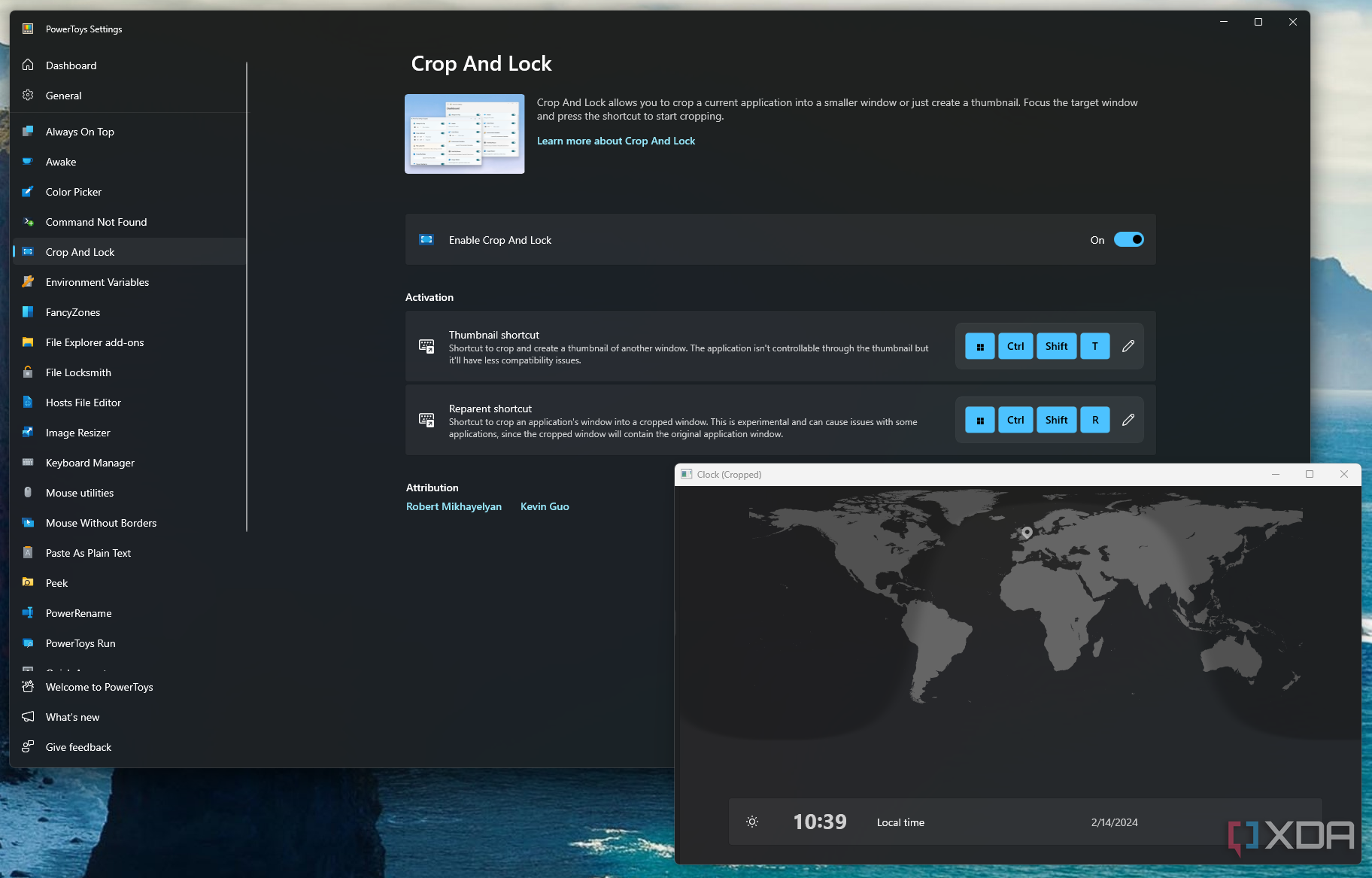
Always on Top is a useful tool, but what if you don't want the entire app window to be pinned over others? Well, Crop and Lock is for you. This tool allows you to crop a portion of one of your open windows and pin it on top of all other windows.
If you just want to keep an eye on a portion of an app, you can press Windows + Ctrl + Shift + T to create a static overlay of the app you want to view. However, if you want to interact with the app directly from the cropped window, you can use the Windows + Ctrl + Shift + R command instead. This will make it impossible to use the main window until you close the cropped window, though.
Environment variables
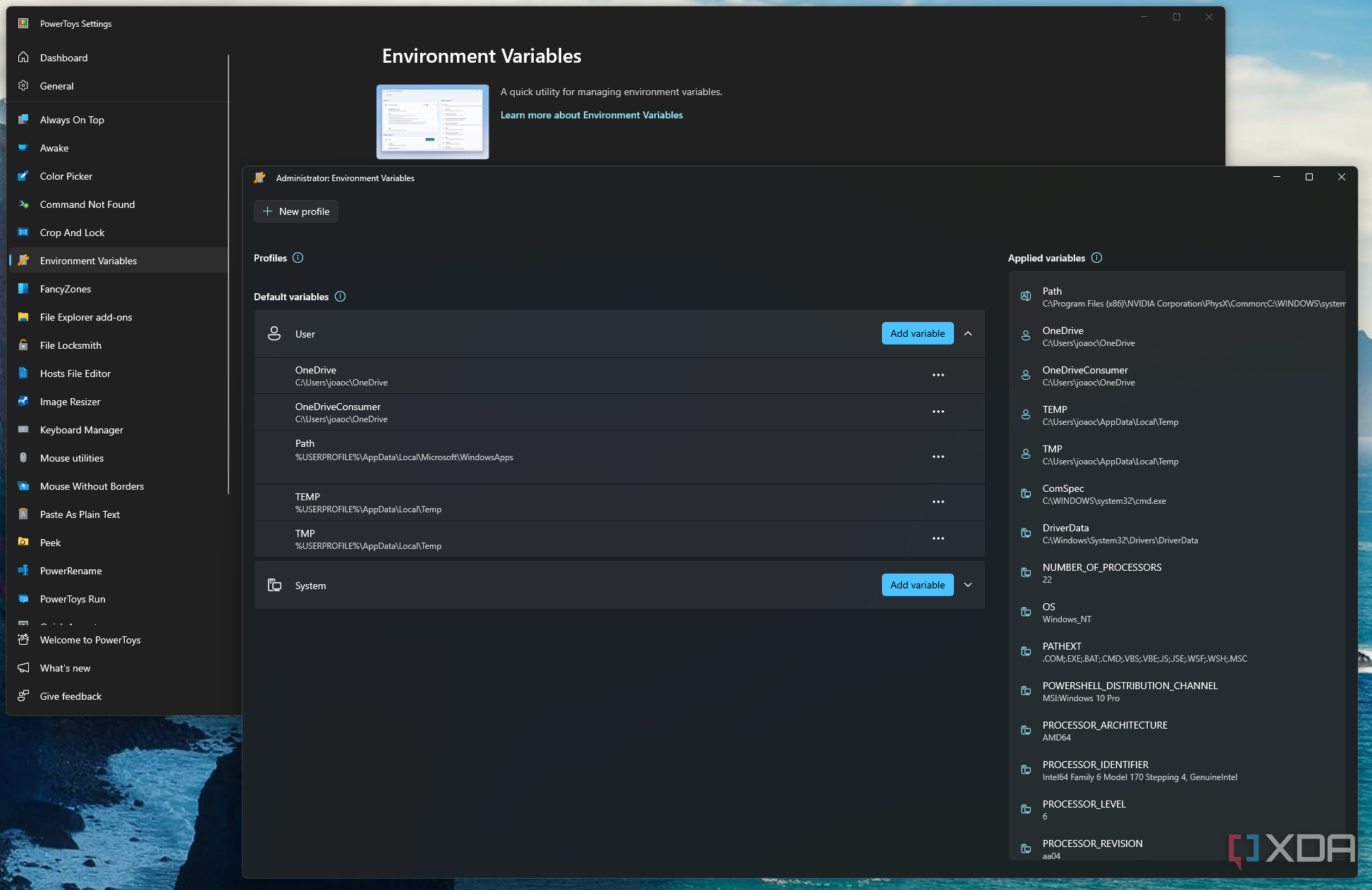
This is another relatively simple, but very useful tool if you want to change some of the deeper settings in Windows. This module gives you a modern and fast way to access the environment variables set up on your Windows PC, with the ability to add more for both the system and user profiles. It's nothing you can't do in other ways, but this is a faster way to get there, and it looks much nicer than the environment variables manager in Windows itself.
FancyZones
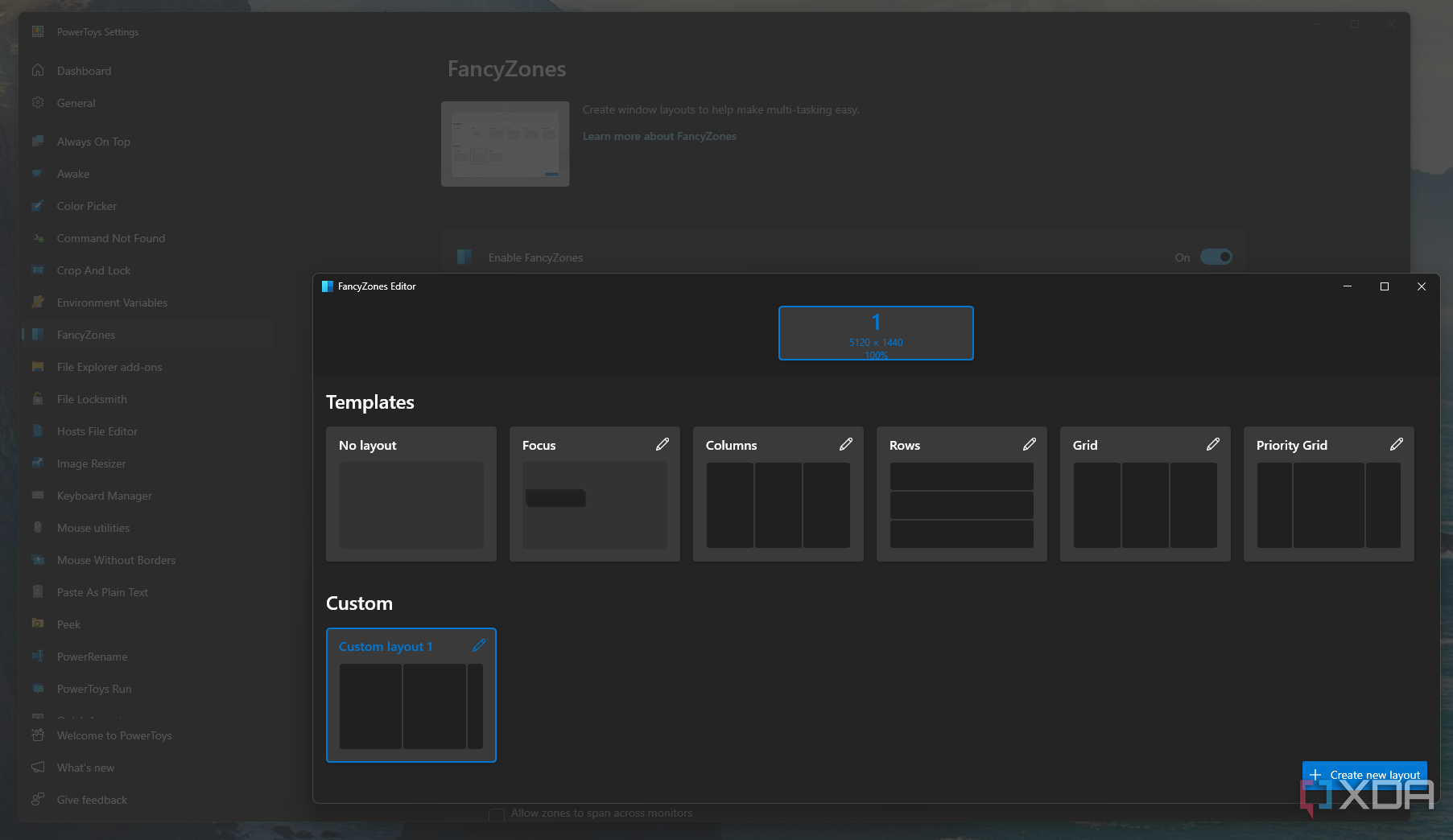
FancyZones is arguably one of the best and most useful tools in PowerToys, especially if you have a big screen. FancyZones is an elevated form of window management, and it lets you create custom layouts for how you want your apps to be laid out in a split screen. You can have as many zones as you want for your apps, and split them in a variety of ways. You can also save multiple layouts to use in different scenarios, so you're not limited to one preset.
In addition to the deep customization, FancyZones also makes it easier than ever to slot apps into your desired slots. Simply press Shift on your keyboard and drag a window into the area you want it in, and it will automatically resize to fit the slot. It's an incredibly useful tool for multitaskers.
File Explorer add-ons
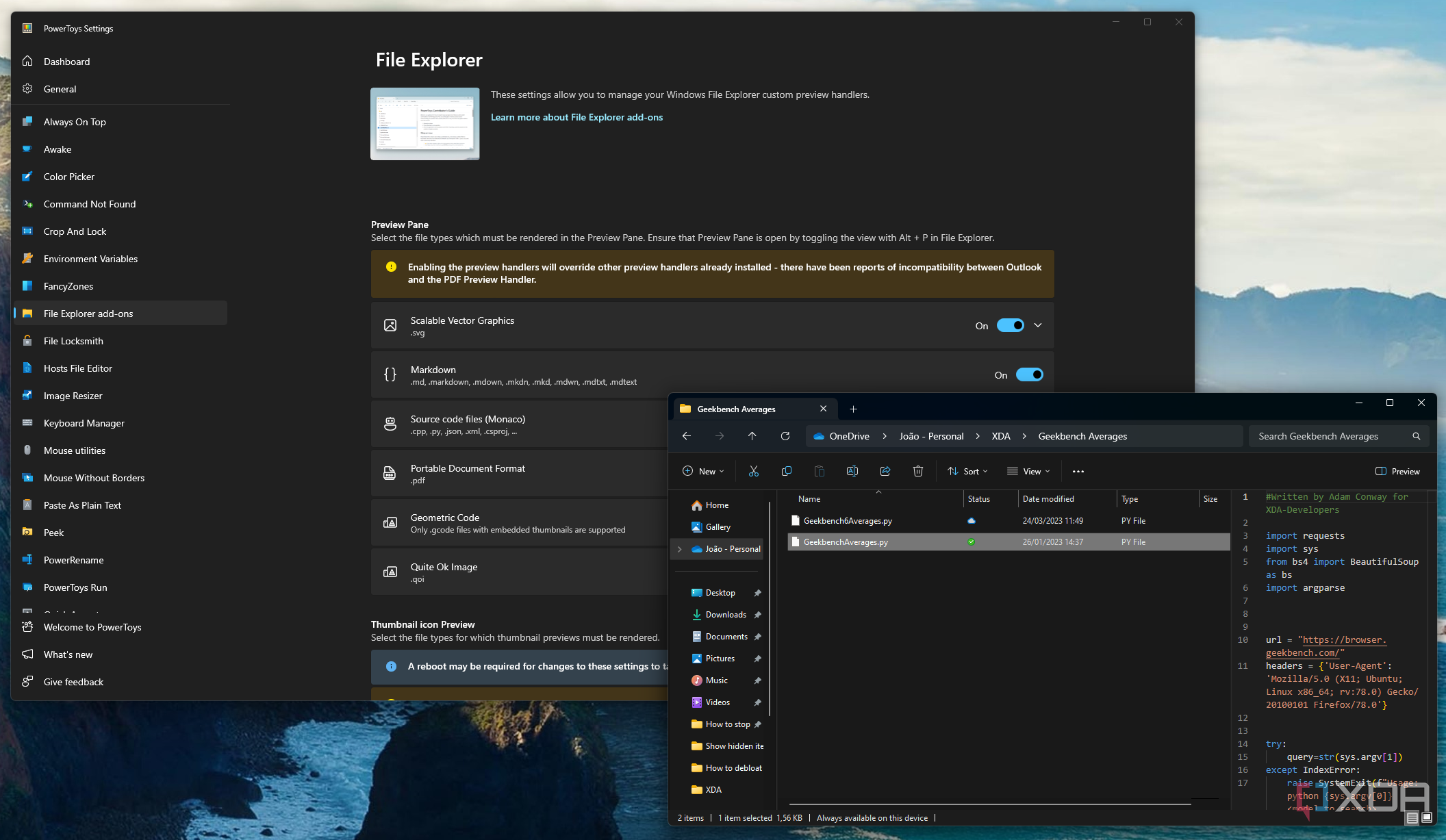
This module is more of a set of expansions for the Windows File Explorer, which adds the ability to preview more types of files. You can enable previews for less common file types, like SVG images, source code files (such as CPP and PY), and even geometric code. With these options enabled, you can preview the contents of these files in the preview pane in File Explorer (which can be enabled with Alt + P).
File Locksmith
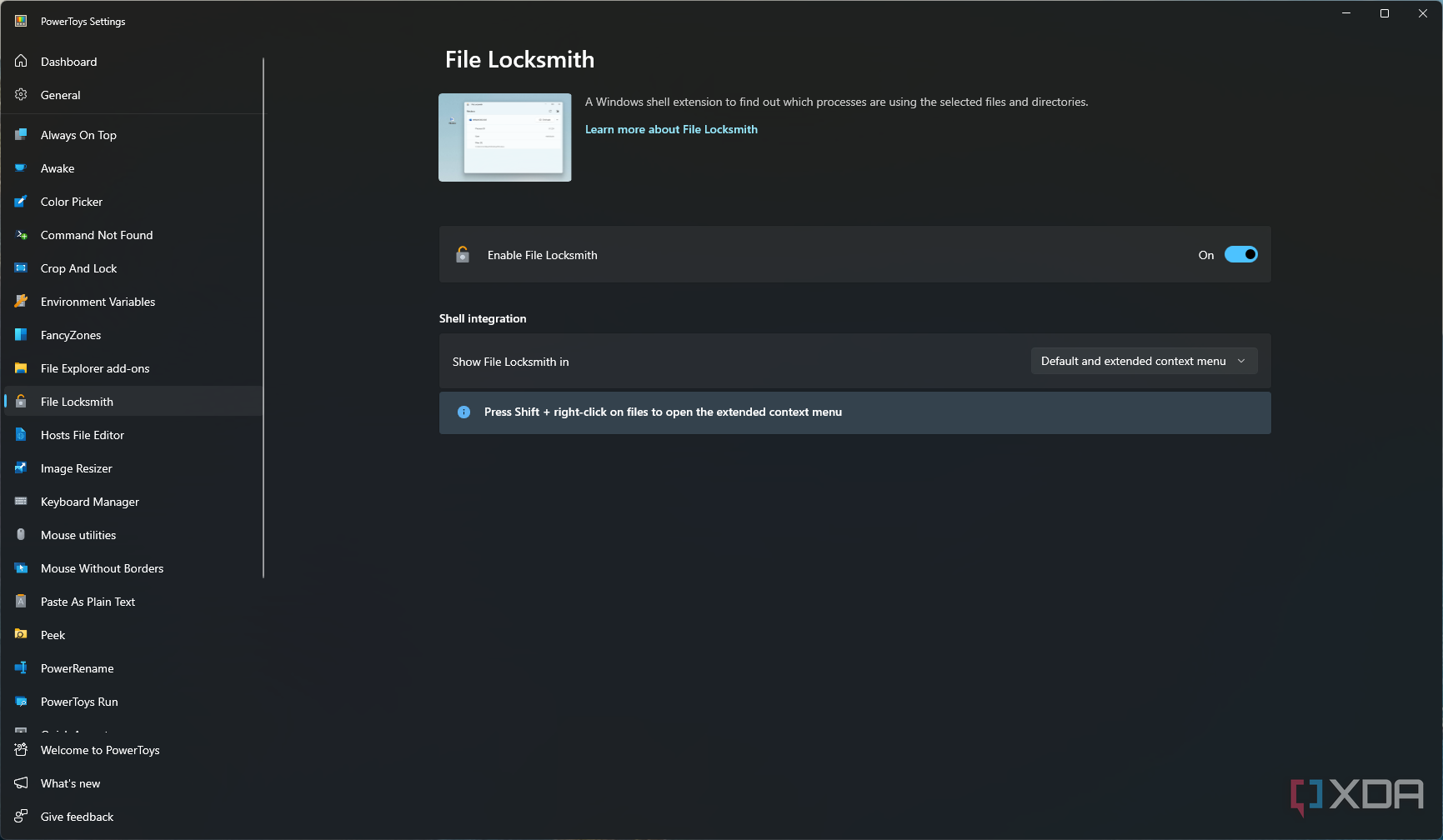
There's a good chance that if you've been in a situation where you tried to delete a file only to see an error saying that the file can't be deleted because it's being used by an app. File Locksmith is a module that helps you get to the bottom of things. With this module, you can right-click the file and choose Unlock with File Locksmith to see what process is using the file so you can terminate it if needed.
Hosts file editor
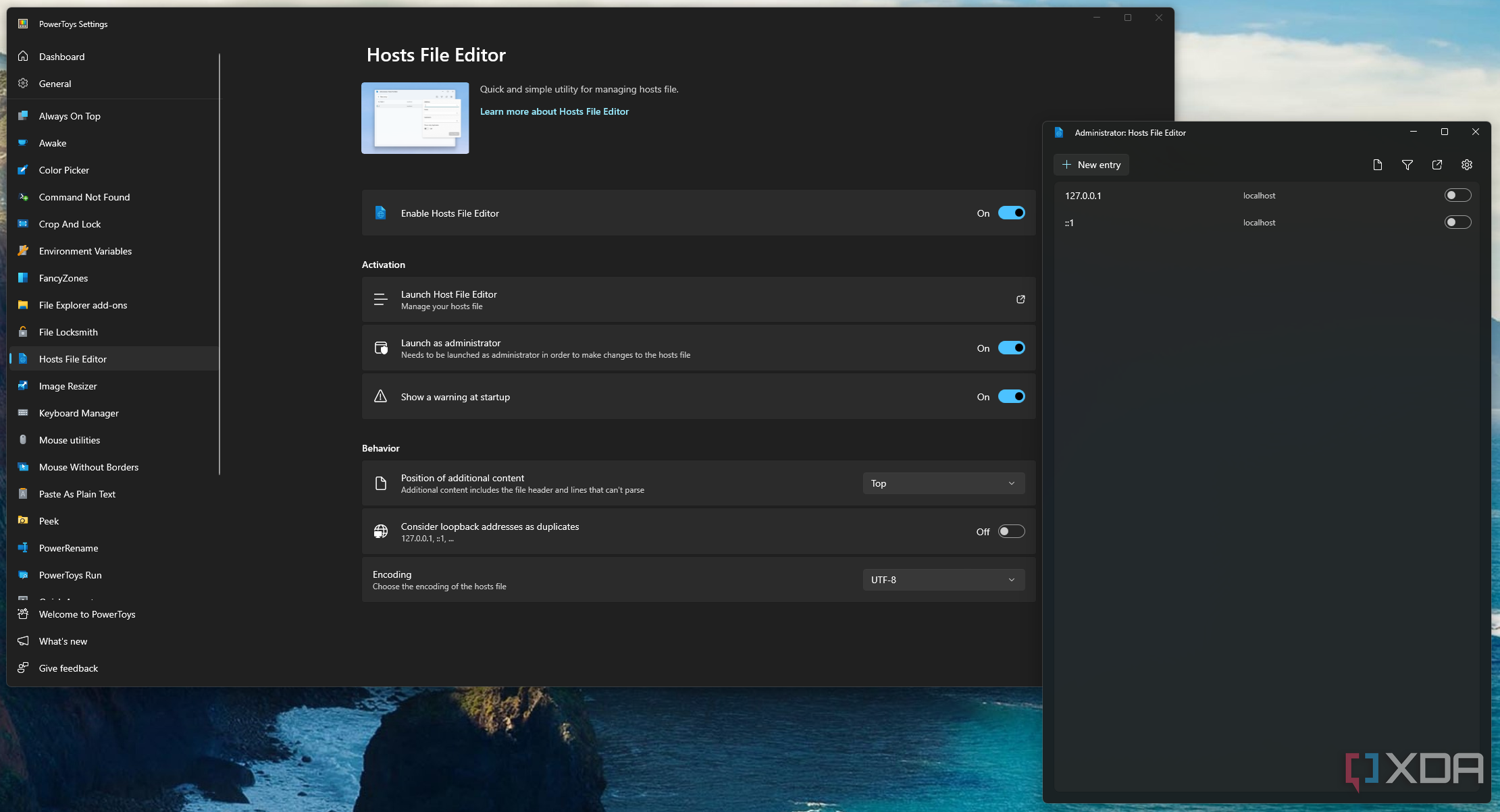
The Hosts file in Windows is a way to block access to certain domains, serving as a security feature to prevent users from going to websites they shouldn't. Similar to environment variables, this is something you can edit without any additional apps, but the Hosts file editor module in PowerToys makes it far easier to edit the values in this file, with a modern interface that makes it easier to block or unblock domains as needed.
Image Resizer
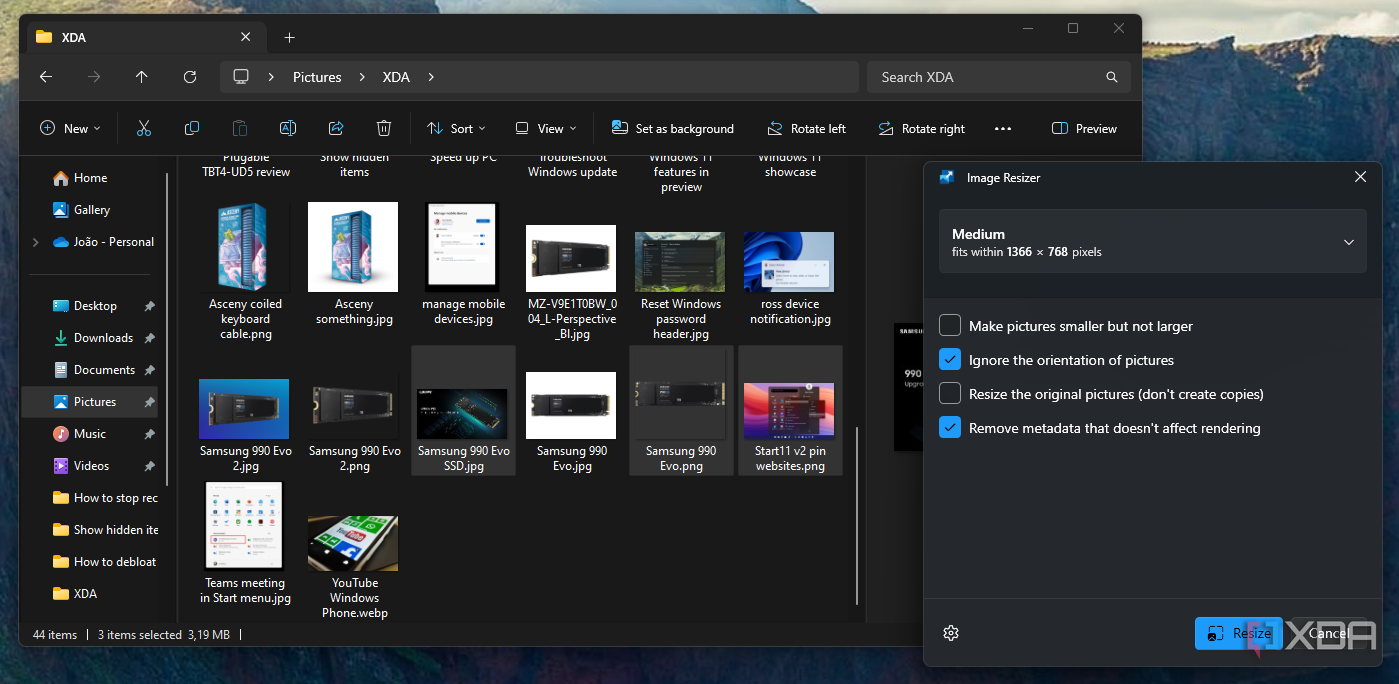
Image resizer is another very useful tool in PowerToys, particularly for users that often deal with size restrictions on image uploads. When enabled, Image Resizer appears in the File Explorer context menu, and it gives you the option to resize images to fit a preset resolution or a custom one specifically for that image (or set of images).
The settings allow you to create and customize preset sizes, change encoder options, and more. And, when resizing an image, you can change options such as removing metadata from images or choosing whether you want to resize the original files or create copies in the desired resolution.
Keyboard manager
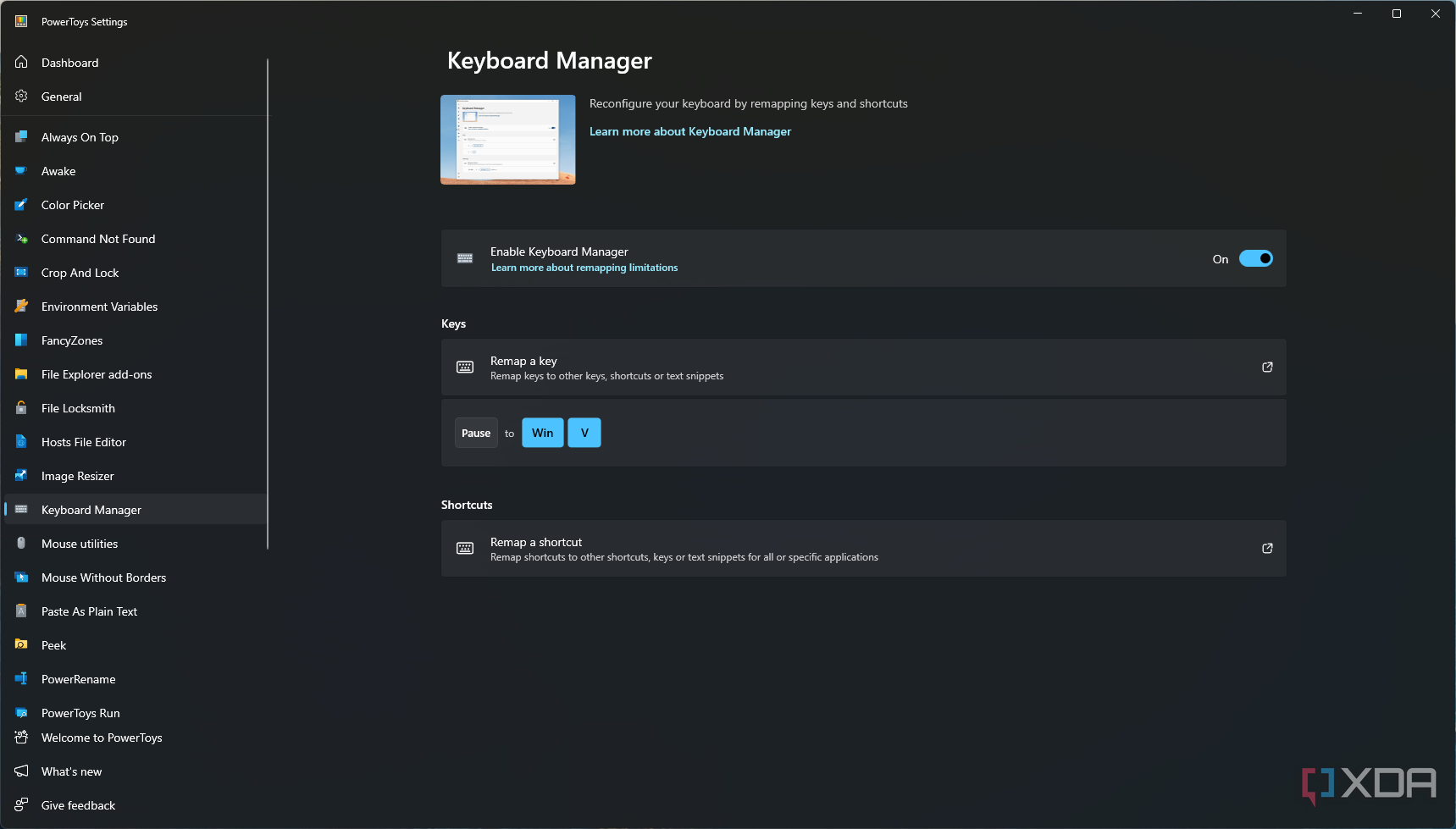
This PowerToys module allows you to make full use of your keyboard for your specific needs. Essentially, it allows you to remap keys to other keys and shortcuts, or you can map shortcuts to other shortcuts. For example, if you never use the Pause key on your keyboard, you can map it to a common shortcut, like Windows + V, to open your clipboard. This is just one example, but the possibilities are endless with this tool. You can even remap a shortcut that only takes effect in a specific app.
Mouse utilities
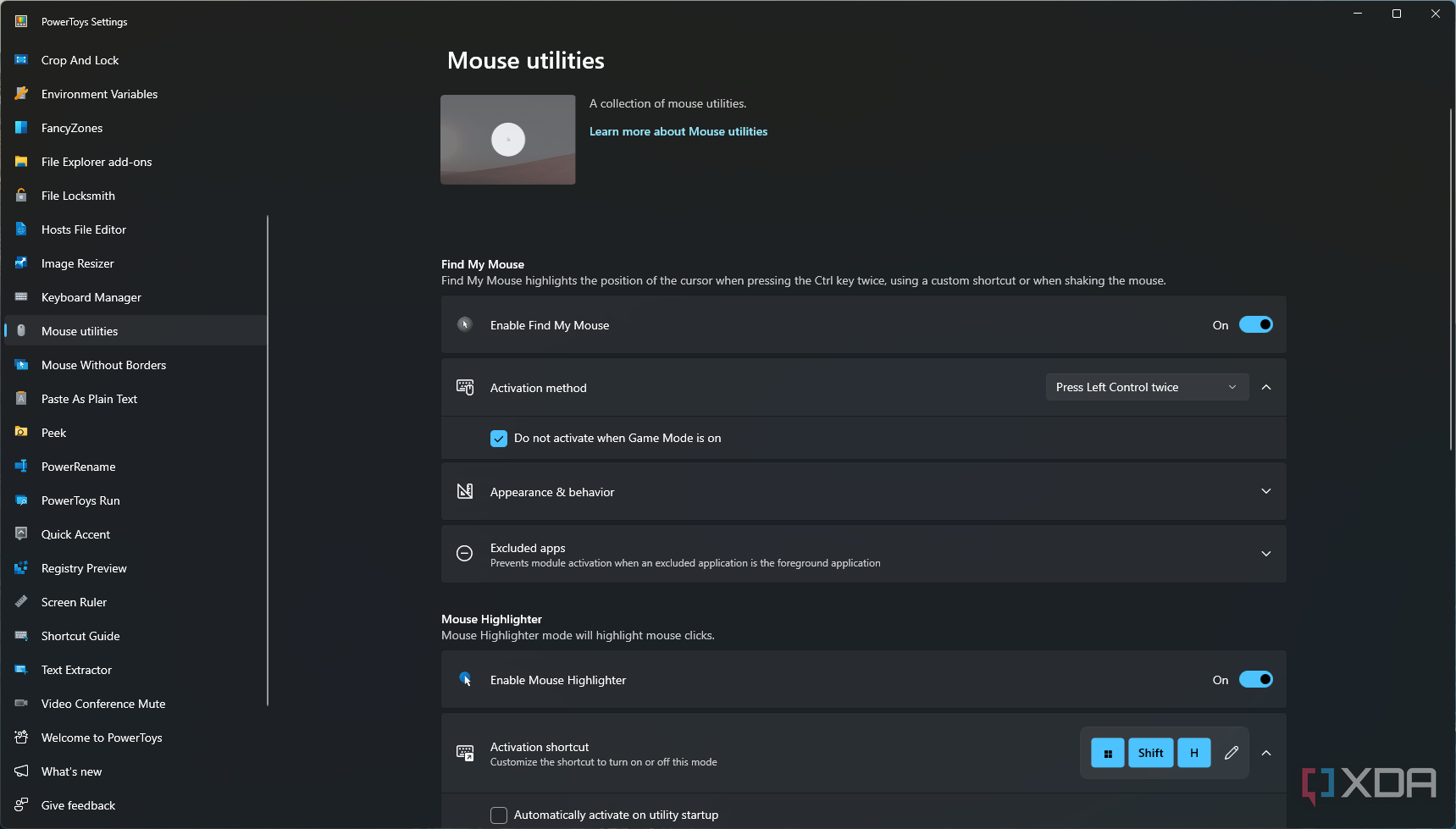
While they count as a single module, mouse utilities actually encompass a few tools related to your mouse, and they're quite useful in different ways. First, there's Find My Mouse, a tool that helps you find your mouse on screen by pressing the Left Ctrl key twice (though you can change it). This creates a highlight around your mouse cursor so it's impossible to miss.
Then there's Mouse Highlighter, which, when enabled (Ctrl + Shift + H), shows a yellow highlight whenever you click your mouse. This is useful for screen recordings if you want to show your mouse clicks to your audience.
Mouse Jump is a useful tool that lets you move your mouse quickly across big screens. When you press and hold the activation shortcut (Windows + Shift + D), you'll see a thumbnail of your screen(s), and you can click any area of it to instantly move your mouse to the corresponding location. If you have a hard time getting where you want to on a big screen, this is a big help.
Finally, there's Mouse Pointer Crosshairs, which lets you pinpoint the location of the mouse pointer continuously. It will essentially show crosshairs across your screen to show you the exact location of your pointer, and it stays on permanently as long as the feature is enabled (Windows + Alt + P).
Mouse Without Borders
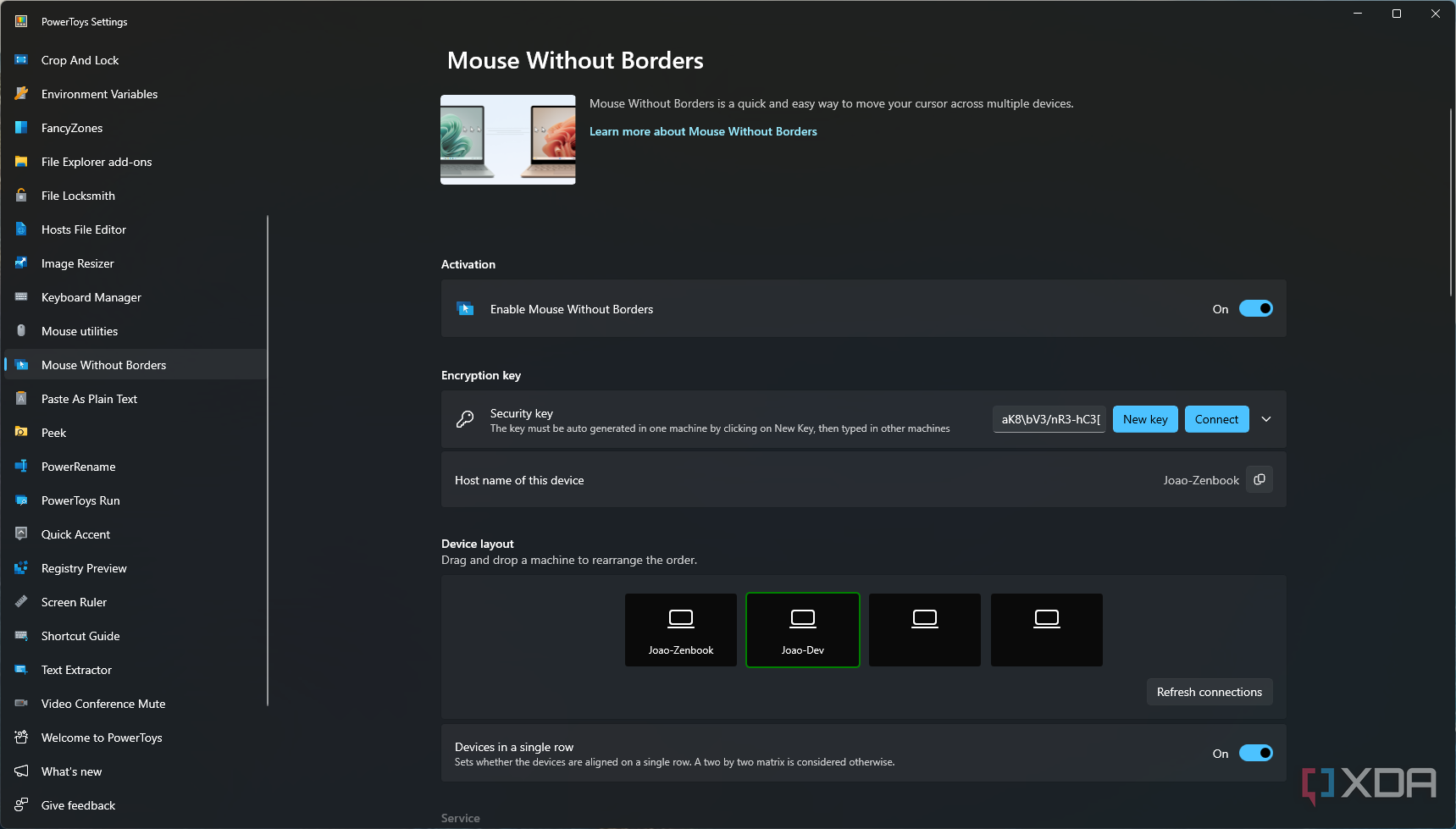
Mouse Without Borders is made for people who have multiple PCs showing side by side, and it's incredibly useful. With this tool set up on multiple devices, you can share your mouse and keyboard across up to four PCs wirelessly, so you don't have to change any settings to keep things working normally. All you need to do is create a security key for other PCs to connect to the main computer, and once your PCs are connected, your mouse can travel across devices.
Despite the name, keyboard inputs can also be redirected to other PCs when your mouse is moved over, and you can even share clipboard items up to 100MB across the different devices. It's incredibly useful if you have multiple PCs you need to use simultaneously. There are also numerous settings available to make the experience work better for your needs.
Paste as plain text
One of the most straightforward modules available, Paste as Plain Text is a module that allows you to use a shortcut to paste text without formatting into any app. While many apps already support their own shortcut for pasting plain text, Windows as a whole doesn't, so this tool gives you the ability to do it using Ctrl + Alt + Windows + V, though you can configure it.
Peek
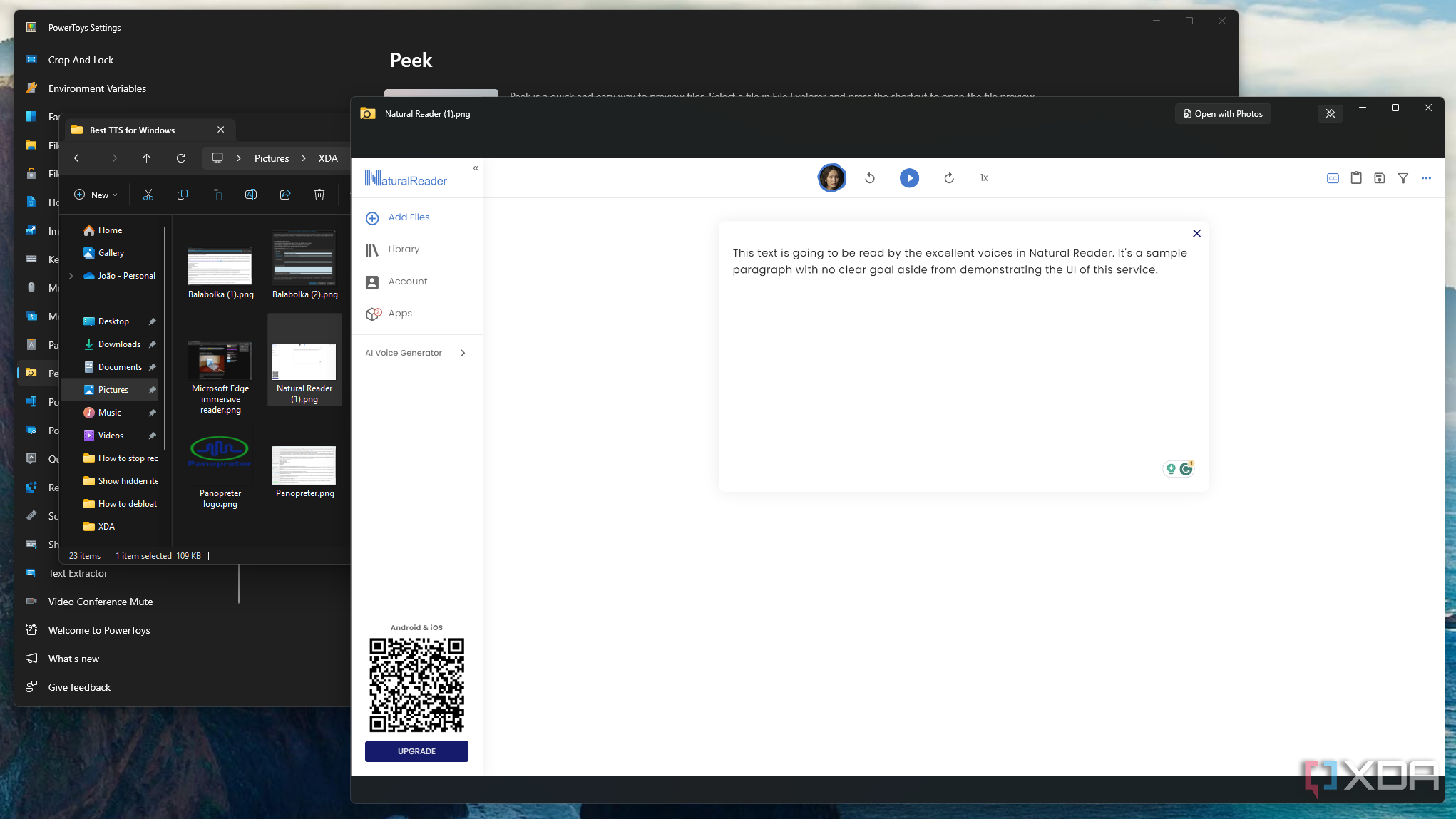
Inspired by macOS, Peek is a module that allows you to quickly preview all kinds of files without having to open the respective app. You can select any file in File Explorer and press the shortcut (Ctrl + Space) to preview a photo, PDF file, and more, all without having to open the full app that would handle them.
If you do want to open the file, Peek also gives you a link for opening the file in its default app so you can get right to it. it's a faster way to see the contents of a file, and it's certainly useful.
PowerRename
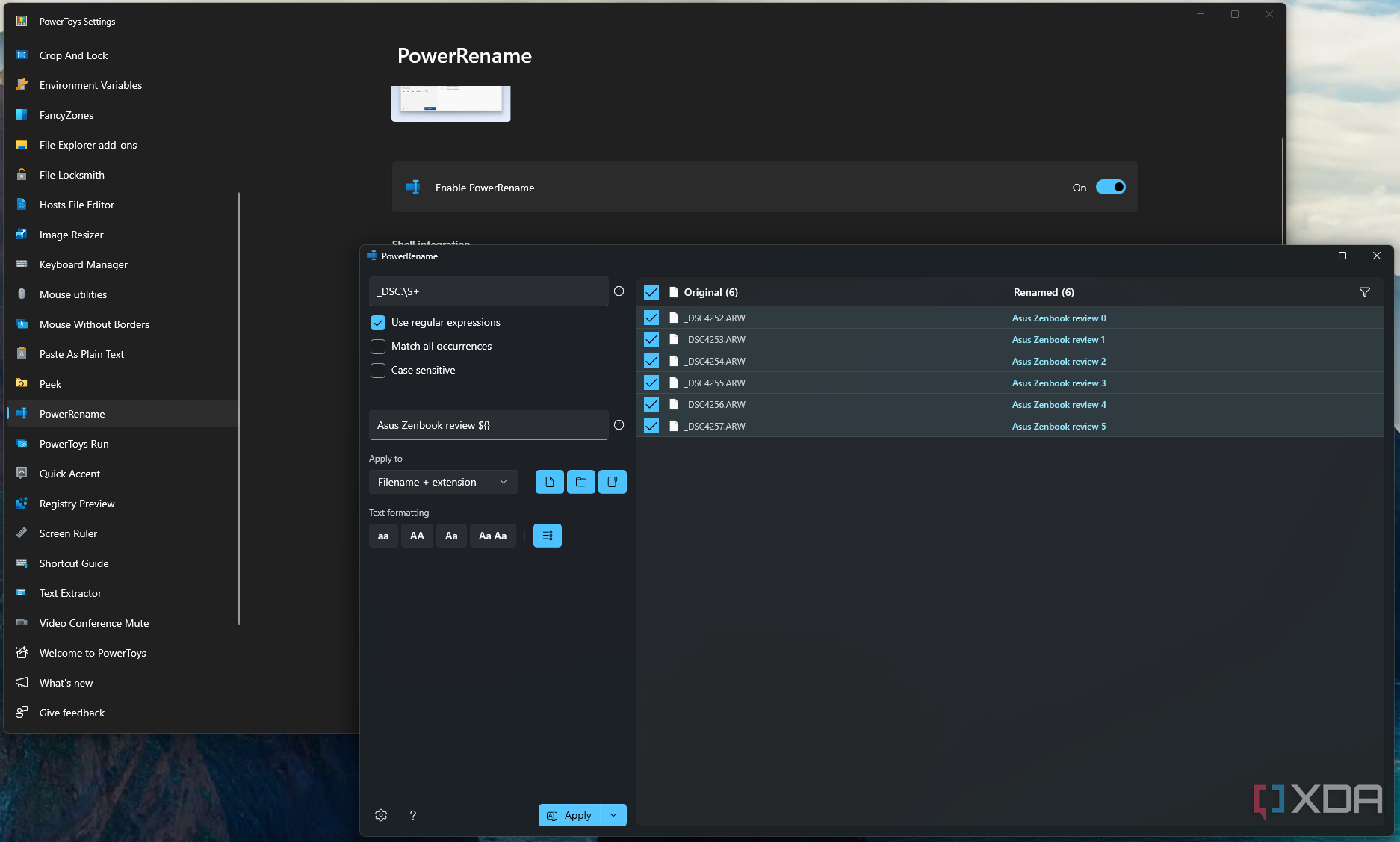
Having to rename multiple files in one go can be cumbersome, but PowerRename is a module designed to help with exactly that. With PowerRename, you can change the name of multiple files so that repeated elements all change to the same thing.
For example, say you have pictures from your camera, they probably all have the same formatting for the name and it won't tell you much. But if you want to make them easier to identify, you can replace part of the name with something more recognizable. Thanks to support for regular expressions, you have plenty of ways to rename your files to whatever you want.
PowerToys Run
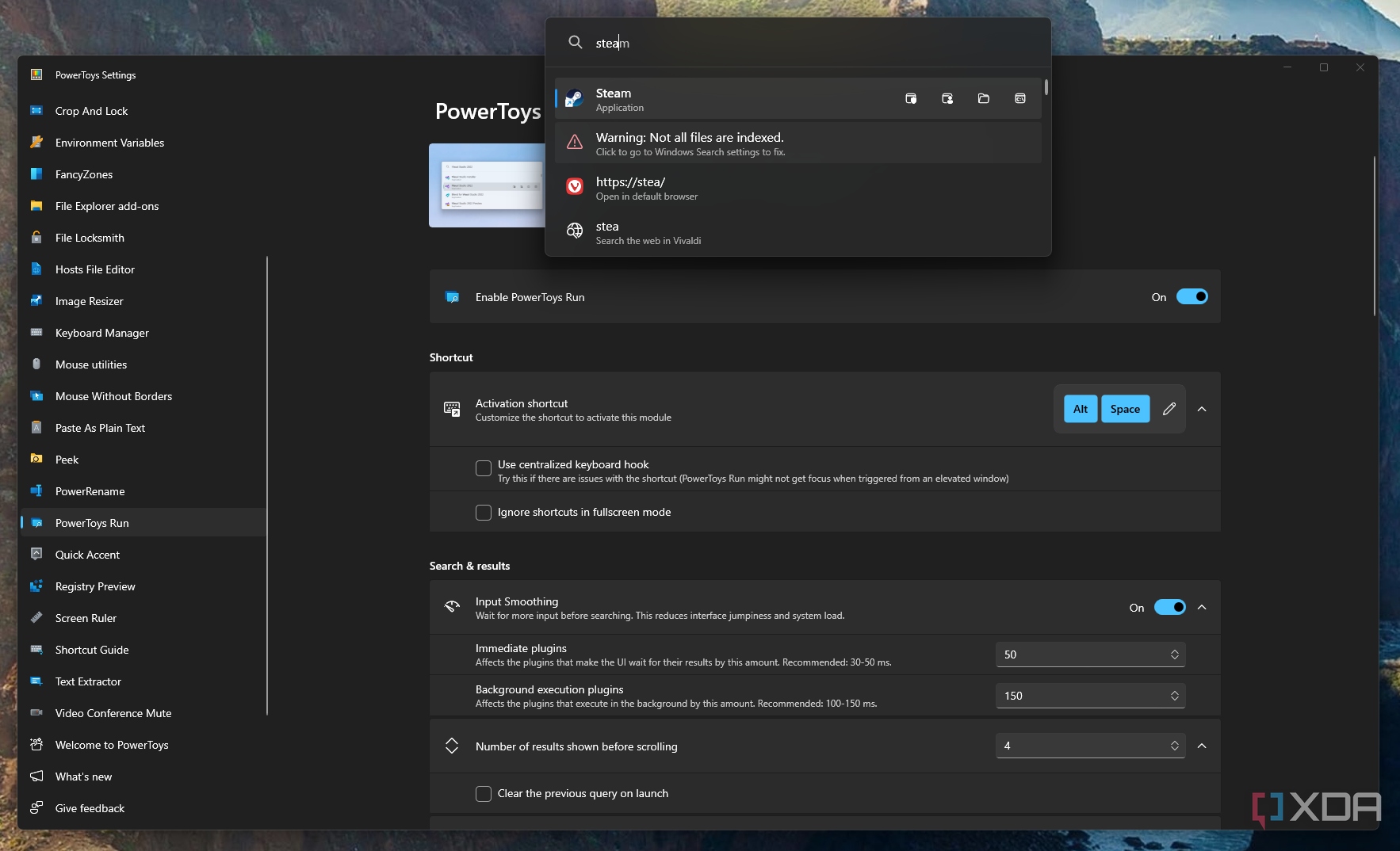
The Run dialog in Windows can be useful for quickly launching apps with your keyboard, but PowerToys Run takes that to the next level. This search and launch tool can open a program on your PC quickly, complete with the ability to launch it as an administrator, as a different user, or even open the file's location.
But that's just the beginning. PowerToys Run comes with a ton of plug-ins that allow it to search for more things. It can find files on your PC, search the web, find content in the Windows registry, or even in your OneNote notebooks (stored locally). All of this is done in a fast and responsive way that works much better than the built-in Windows Search. This is a super powerful tool for getting to the files and apps you need, and it comes highly recommended.
Quick Accent
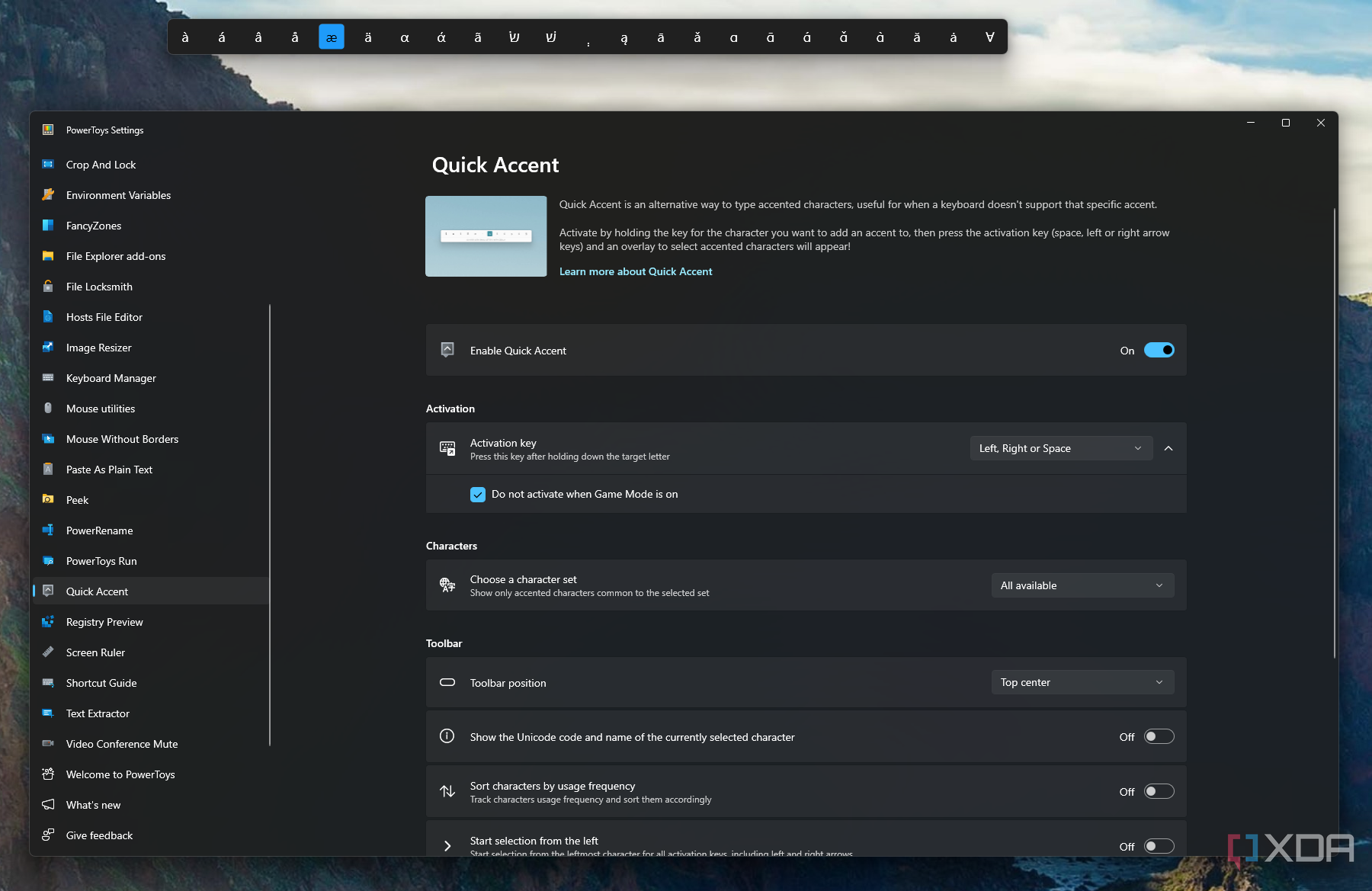
Typing characters with special accents can be complicated on a typical keyboard layout, and that's why Quick Accent can be so helpful. With this module enabled, all you need to do is press Space while holding the key you want to use an accent for. You'll see a list of accented variations of the letter you chose, and you can keep pressing Space to cycle through the options available. This is significantly faster than using the old Character Map or even the symbol picker in Windows 11.
RegistryPreview
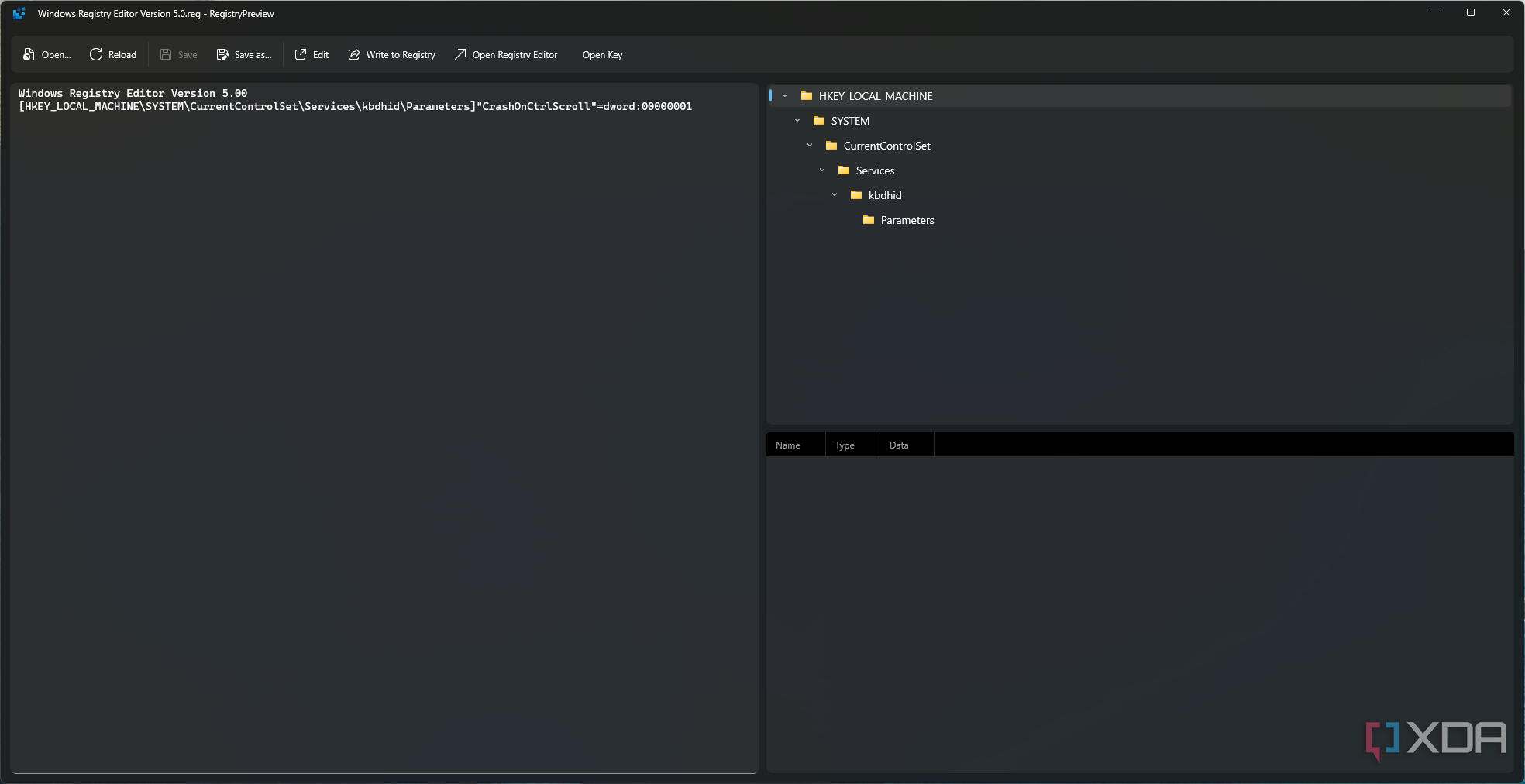
RegistryPreview is another relatively straightforward tool, as it allows you to preview the content of a registry file. Registry files modify the Windows registry to tweak certain features and functionality, but they can come with risks, so this previewer can help you know exactly what changes are being made with a registry file you download off the internet.
Screen Ruler
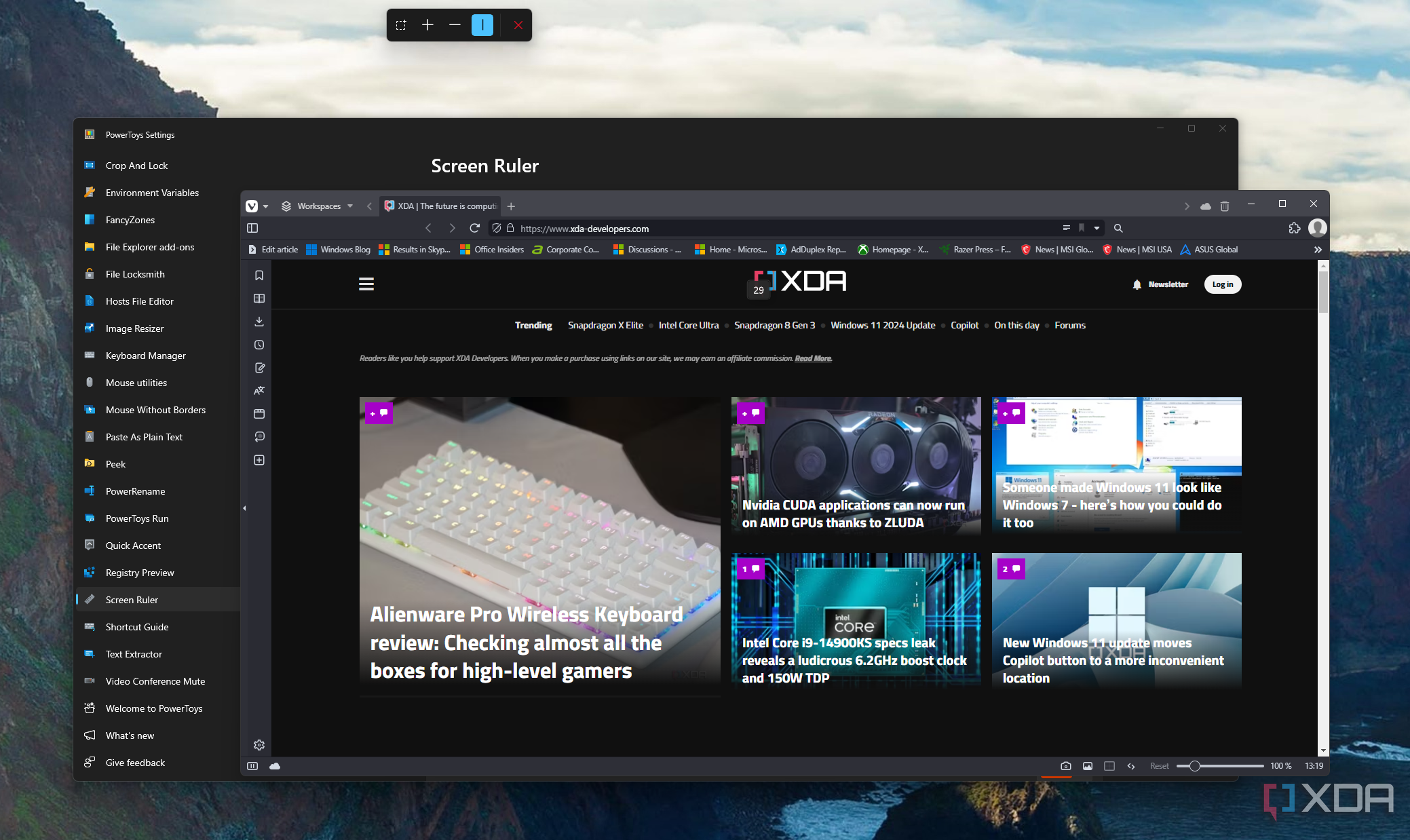
Ever wondered just how big a part of your screen is in pixels? Screen Ruler is here to help with that. As the name suggests, screen ruler can measure the size of certain elements on screen, and it can do so in a few clever ways. First, you can just draw an area on the screen to measure its horizontal and vertical size. But there are also modes that automatically measure the size of a specific area with the same color, so you just move your mouse over that area, and you can see how long and tall it is.
Shortcut Guide
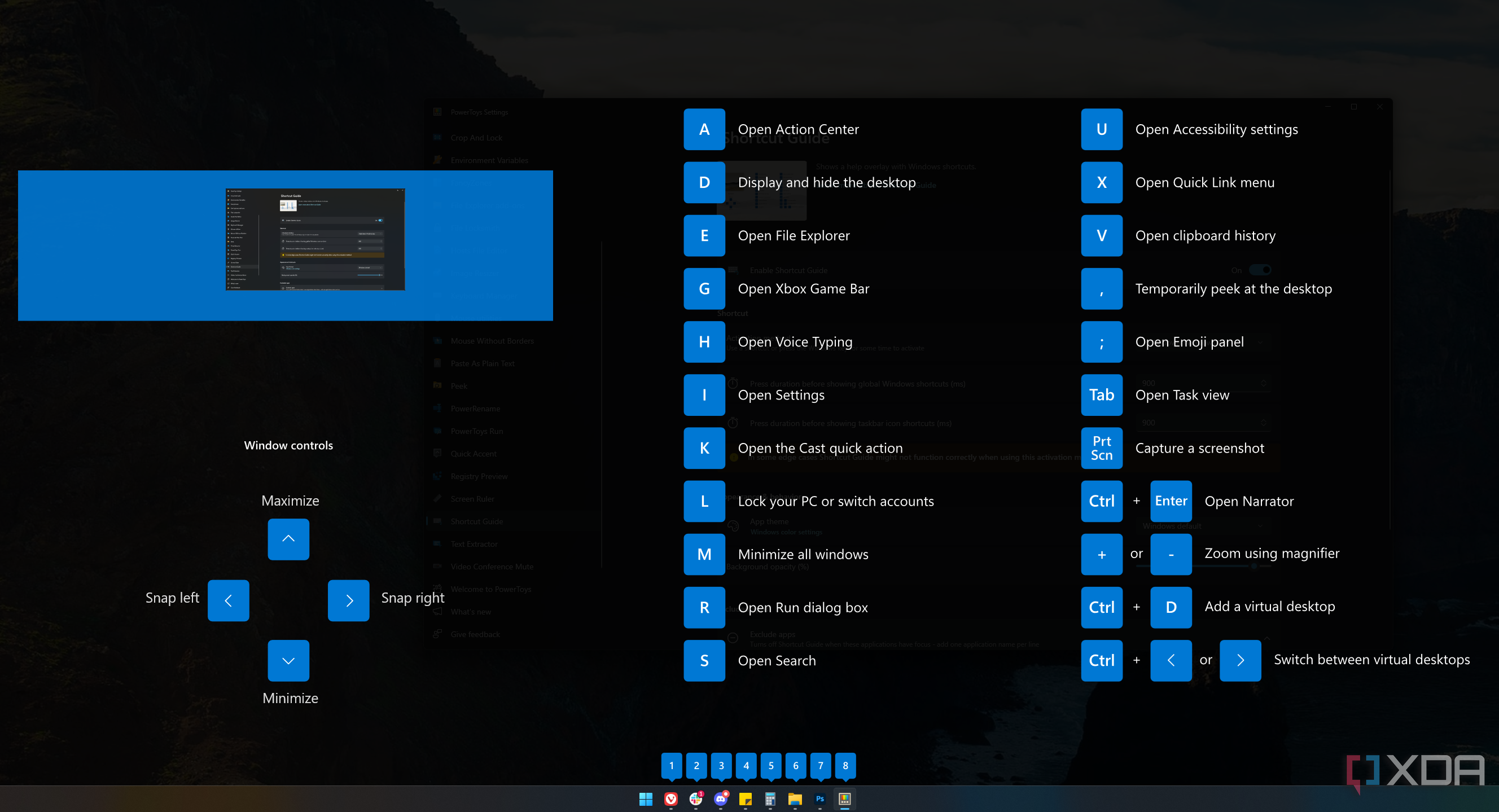
There are a ton of keyboard shortcuts in Windows 11 that can be used to access specific features. If you don't have the time to remember all of them or check them out, the Shortcut Guide module is for you. While this won't give you every shortcut, it can show you all the main shortcuts that use the Windows key. You can activate it with a keyboard shortcut (Windows + Shift + /), but it might actually make more sense to change it to open by holding down the Windows key, so you don't have to remember a specific shortcut to see other shortcuts.
Text Extractor
Text Extractor is another incredibly useful tool, particularly if you want to copy text from an image. Using optical character recognition (OCR), this module can grab text from any part of your screen, even if it can't be copied normally. Text is automatically copied to the clipboard, so you don't get to see your selection before pasting it somewhere else, but it's still great to have this at hand.
On Windows 11, the Snipping Tool app includes a more robust OCR solution, so this particular tool is most useful on Windows 10.
Video Conference Mute
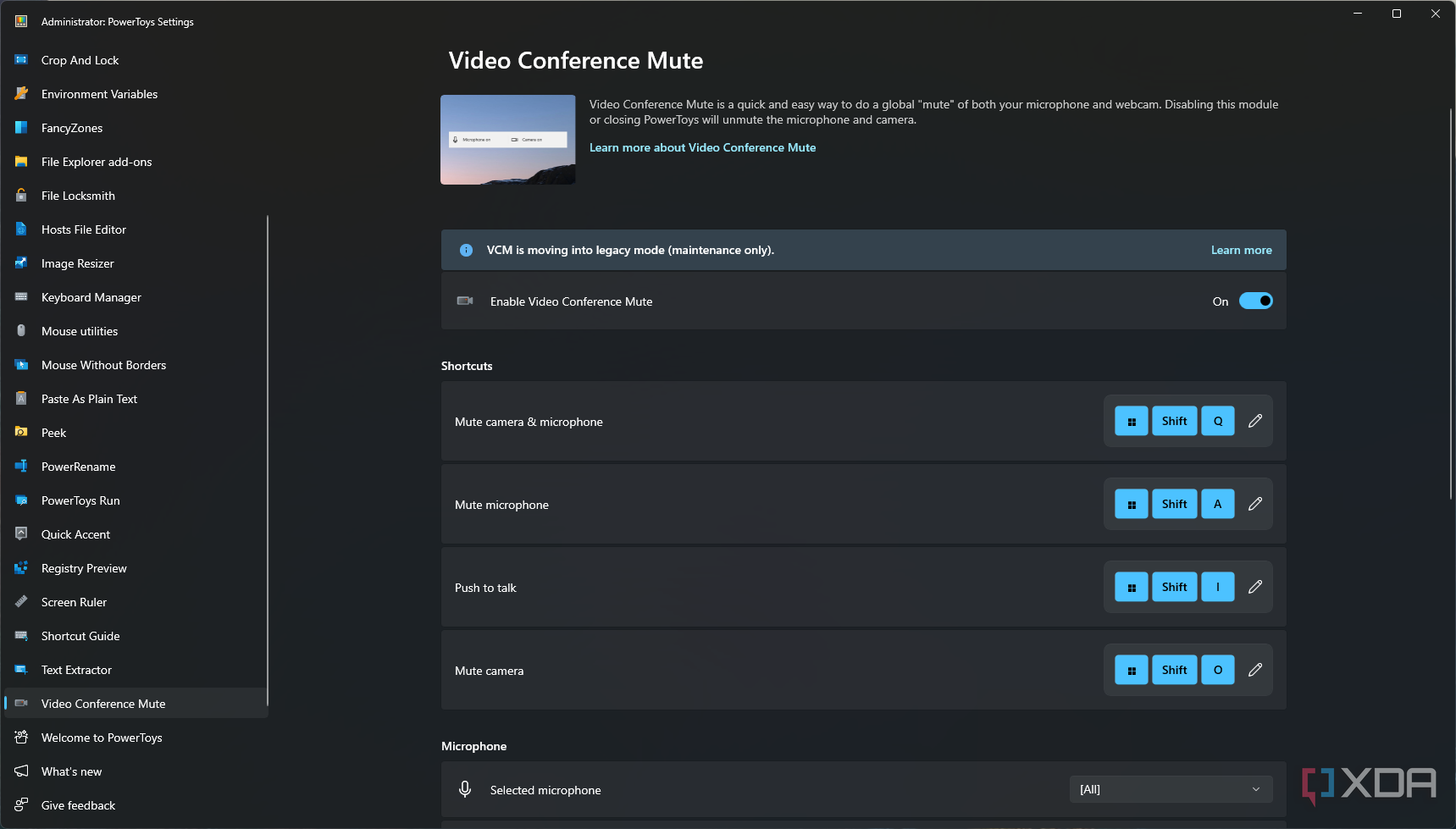
The final tool in PowerToys is Video Conference Mute, and it's pretty useful for those of us who still engage in online meetings frequently. This module enables a series of shortcuts you can use to mute your microphone, turn off your camera, or push to talk, so you're only seen and heard when you want to. This global solution works for all apps, so you don't have to learn the controls for Zoom, Teams, and whatever else you may be using.
Video Conference Mute has been moved into maintenance mode by the development team, so it won't be getting any new features, but it's still a useful addition.


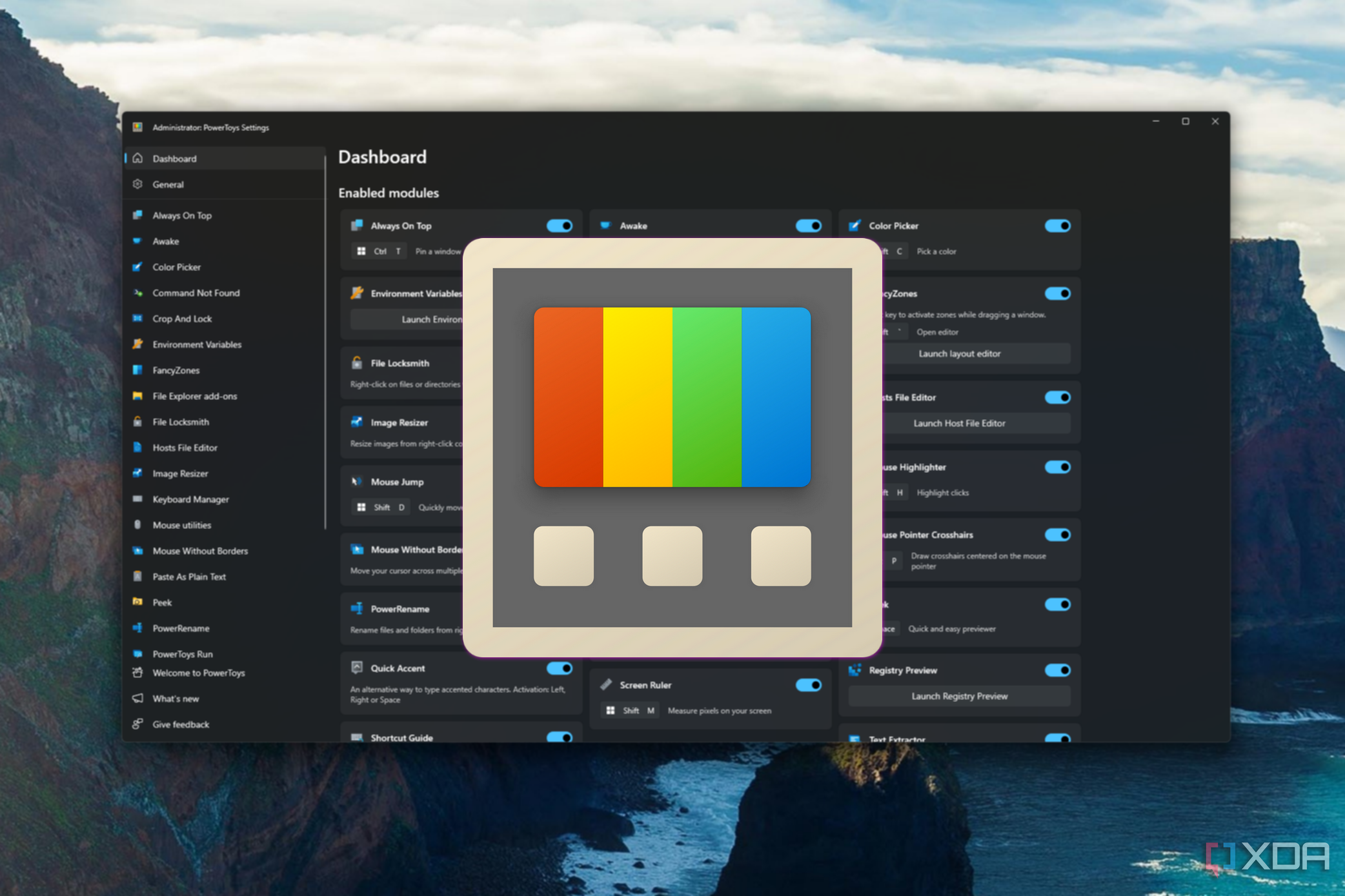



Recommended Comments
There are no comments to display.
Join the conversation
You can post now and register later. If you have an account, sign in now to post with your account.
Note: Your post will require moderator approval before it will be visible.